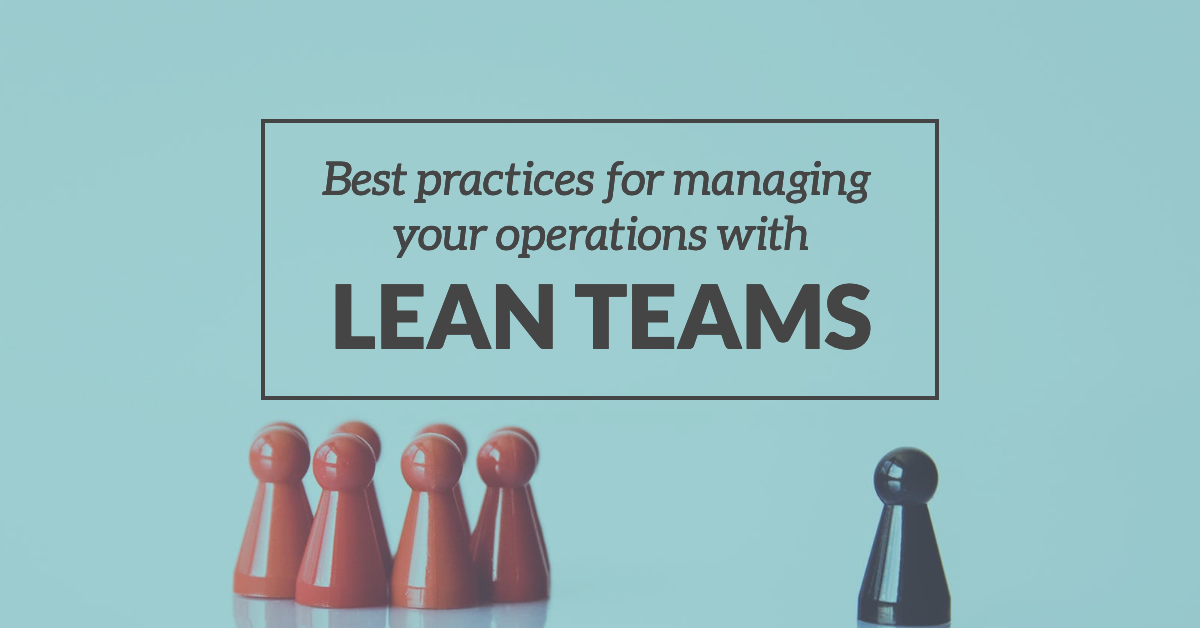
In their recent “Digital Leadership Report,” IT staffing provider Harvey Nash Group found that 69% of US tech leaders say they are unable to keep pace with change because of lack of talent. Harvey Nash CEO Bev White said, “businesses face a triple whammy. They lack the supply of skilled resources they need; they have not yet evolved a new and effective employee value proposition for the hybrid working world; and the needed skills themselves are changing as technology develops at an accelerated pace.”
With this perfect storm of challenges facing today’s operations— a labor shortage, skills gaps, and challenges in trying to scale teams up to meet production demands— organizations are looking for viable solutions to meet goals until they’re able to hire adequate staff. Adopting a lean model may be one helpful way to continue meeting goals during this challenging time.
A lean team is a group of workers empowered to make quick decisions and take actions that benefit the company, such as rapidly responding to problems. Lean teams both minimize wasted time, costs, and manpower requirements, and boost performance in cost control, production, and quality.
If your organization is still struggling to hire and onboard qualified team members during today’s ongoing staffing challenge, lean teams could be a life raft in the storm — offering a viable solution worth considering. Here are some tips to help manage your operations with a lean team.
Build a smart lean team
A hallmark of lean teams is cross-functionality. Members of the teams “should bring a diversity of skills and/or represent different departments within the company,” notes Lean Startup Co. “To build a cross-functional team, start by asking what departments are needed to make meaningful progress that won’t get roadblocked along the way. A properly developed lean team could improve communication and lead to positive change by including people from each department involved in the proposal process.” For example, “an industrial project might require a product designer, someone with manufacturing expertise, and a salesperson who understands customers’ wants and needs.” Meanwhile, “an IT project might include an engineer, a designer, and a marketer.”
Empower your lean teams
“The traditional business structure has resulted in an often-vertical power structure that accepts minimal input from employees down the line, making it difficult to improve processes in a timely manner. A lean team addresses this problem by empowering each team to make decisions and facilitate change,” explains Manufacturing.net. To empower your teams, you need to make sure the roles and responsibilities are clearly identified, along with the methods for improving processes. Then, each team must be empowered to make reasonable changes without having to move through the entire command structure.
Set Objectives and Key Results (OKRs)
In order to get people motivated, they must value the goals that are set for them. These goals must be challenging, yet obtainable for your employees. Further, always ask for feedback on these goals, as well as progress toward target attainment. Feedback should always contain measurable facts and figures. For example, according to the Harvard Business Review: “Objectives and key results, or OKRs, have become one of the most popular frameworks for teams looking to plan and measure the success of their work. With this system, leaders at each level of the organization start by defining high-level, qualitative, inspirational goals, called ‘objectives.’ They then define who will be the user or the consumer of their team’s work, and determine what behavioral changes they would expect to see in those consumers that could be used to quantify whether the team is achieving their high-level goals. These quantifiable outcomes are called ‘key results,’ and are used to measure how successful teams are with respect to their objectives. This approach keeps planning and progress-tracking focused on the impact the work is having, rather than micromanaging the specific work that teams are doing on a daily basis.”
Consider managing projects with Agile
Many companies that go lean also go agile, because the two systems are built on the same foundational beliefs and are highly complementary. According to McKinsey, a growing number of companies are getting better results under mixed models than they can by applying either just lean management or just agile systems. “Team models are organizational constructs that bring together individuals in an operating model to deliver value. Lean management introduces team models such as work cells, in which teams work together to complete steps that previously happened separately and were vulnerable to delay. Meanwhile, agile relies on concepts such as cross-functional teams and flow-to-work pools, which follow the same underlying philosophy. Under a best-of-both approach, top-performing companies combine tools, ways of working, and organizational elements from each to form a custom solution that meets the company’s unique needs more completely and quickly than had been possible.”
Get expert help to fill vacant roles
If you’re among the many companies struggling to find the right talent to build your organization, we’re here to help. With our Talent 101 Circuit, we can help you find strong, qualified candidates to fill roles for almost all levels and specialties. Take a look at some of our available talent, and don’t hesitate to reach out to us today so we can start finding the right people for your open positions.



